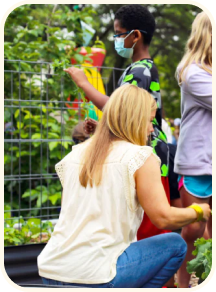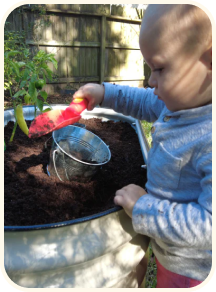Growing Up in a Cranberry Family: Busy Bog Business
If we look hard enough, we all can find farmers and gardeners in our family trees.
Unless you come from generations of city dwellers, it won’t be hard at all. It wasn’t that long ago when everyone farmed or grew their own food. We all have farming DNA in us.
Our specialty crop
When I was just a youngster, my parents purchased a cranberry bog. I live in Massachusetts. We never call a cranberry bog “a cranberry farm.” My father was never called “a cranberry farmer.” He was called “a cranberry grower.” The land we grew on was always called “the bog” or “bogs.”
18 acres of opportunity
Early cranberry bogs were the result of glacial deposits of gravel, peat, and sand.
Commercial bogs are man-made. They are constructed next to lakes or ponds. The bog is flat land, but sunken a few feet below ground level. Ditches are dug, in a way to cut across and surround each section of land. This is all done to flood the bogs, during a frost or freeze or for picking.
A small aqueduct and dyke are built to connect the bog to the body of water. A pump in a small shed does the work of moving water to the bog and off again. We had 18 acres total. Perhaps we had nine-producing acres. Our home was in the next town over.

A family affair
I was excited to be working on the bog with my family. There were six of us. My mom and my sister quickly discovered they had severe hay fever! So then, we were four.
There was no money for hired hands. Of course, we were all part-time workers. Dad was a full-time firefighter. Though we kids had the summer off, most of the hard work happened in the fall, when we were steeped in our multiplication tables and showing off our new Buster Brown penny loafers.
A chore from the sandy shore
An annual task that I always thought strange was “sanding” the bog. Apparently, it was discovered that windswept sands blown in from a beach dune make cranberries grow more vigorously, hence the name “Ocean Spray.”
Dad would use a sanding machine to spread an inch or so of sand across the entire surface. That’s a lot of sand!
Time-consuming tasks
The greatest threat to the bog was not the weather, but the weeds.
Every spring I would spend days pulling up baby oak and maple saplings. Dad also spread fertilizer and battled destructive animals like moles and other critters.
In those days herbicides and pesticides were dumped from the air by crop dusters. This was a foolish and toxic tradition. Bogs in Massachusetts are set in residential areas. If a crop duster would be in the area, residents were notified to stay inside and close all their windows. After enough complaints, the tradition was stopped. However, we had fun watching when we could.
Dry picking
The fun part, of course, was harvest time. It was also when we worked the hardest and were the coldest!
Early berries might be picked in September, but late berries might not be ready until late October. Most growers would wet-pick. We dry-picked.
We had funny looking machines, the width of a push mower. On the bottom was a row of long metal teeth. The teeth slid in between the vines, plucking the berries off onto mini conveyor belts which deposited them into a burlap bag, hooked onto the top of the machine.
When the bag was full, my dad set it on the ground and hooked an empty bag. My brothers drove a cart around the bog, gathering all the burlap bags. They used plywood ramps to cross over the ditches.

Separating the good from the bad
My brothers would stack up all the filled bags on a huge trailer.
Sitting on the trailer was a machine called “the separator.” It was my job to heave the full bag up onto a grate and dump them in. I was little so I needed to flip over a cranberry crate and stand on top of it to do my job.
All the spent vine would be blown behind me by this machine, which had a motor with a fan inside. All the berries would fall below into a crate. When the crates were full, I would stack them as high as I could.
Once all the berries were put through the separator, the crates were ready to stack into the dump truck, to be driven to Ocean Spray, which was about 15 miles away.
Treasured memories
I have great memories from that time.
The bog was remote, so quiet and serene. In the late afternoon, tall pine trees overlooking the bogs would create long-reaching shadows, blanketing the land as if to protect it from the harsh sun.
We knew our work would be ending soon as twilight descended. Though we didn’t wet-pick, the beauty created by local growers raking all the floating berries on the water into big yellow booms is always stunning to see.
I used to think the red berries created gorgeous carpets in the fall. The vine is still green when we harvest, but later in the fall the remaining vine, which can be a foot deep, turns a deep cranberry color, creating the prettiest carpet ever.
The picture of me is the only one I have of the bog. It was November of 1969. That was super late to be picking. I was about to turn 8. I’m sitting on the trailer, on top of the spent vine.

Today
If you love cranberries, you can certainly grow your own! You can grow in a small container or even a larger bed. Then, all the bragging rights will be yours at your Thanksgiving gathering.





























Leave a comment